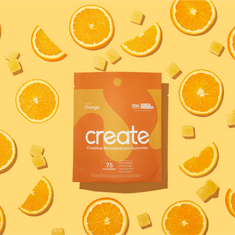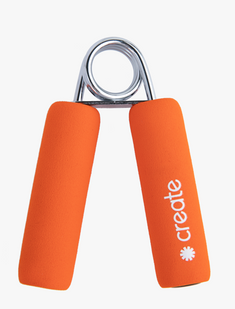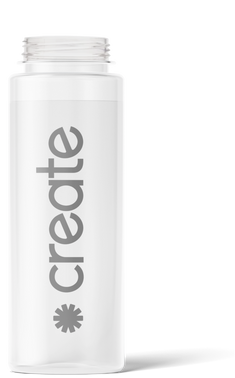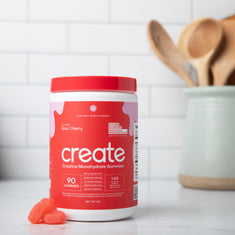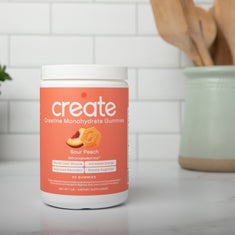Understanding Creatine Loading For Women: Dosage & Timing
Creatine Loading For Women: A Comprehensive Guide
Creatine is known and popular among athletes, bodybuilders, and powerlifters. It's known for its amazing benefits, ranging from boosting strength and performance to increasing energy levels. However, there can be many questions surrounding creatine regarding women specifically, particularly regarding loading phases and how it affects the body differently than men. To help answer these common queries about creatine loading for women, here are some resources you can explore. After reading the guide, you'll feel a definite need for creatine, so visit the Create website to buy the best quality creatine made with the highest standards and most trusted means.
What Do You Mean By Creatine Loading?
A creatine load is when you take a substantially higher quantity of creatine than you would normally, typically in the form of a supplement that you take for only a brief period of time. It is designed to swiftly and effectively boost the amount of creatine stored in muscle tissue, which allows you to benefit from its effects more quickly than you would with normal daily supplementation. Because of this, it can be taken with or without food.
Why Is It Important To Understand The Creatine Loading For Women?
Understanding creatine loading for women is important for several reasons:
It Helps Women Optimize The Benefits Of Creatine
Creatine loading is the process of saturating muscles with creatine by consuming high doses of it for a set period of time. This loading phase is typically followed by a maintenance phase where lower doses of creatine are consumed to maintain the higher levels in the muscle cells. Research has shown that creatine loading can increase muscle mass, strength, and power output in both men and women.
However, the quantity and timing of creatine intake can vary from person to person depending on things like body weight, muscle mass, and exercise regimen. Understanding the creatine loading process for women can help optimize the benefits of creatine supplementation.
It Can Help Women Avoid Potential Side Effects
While creatine is generally safe, some women may experience side effects from creatine supplementation. These side effects may include nausea, dehydration, and cramping. Understanding the dosage and timing of creatine loading can help women avoid potential side effects. In addition, it is important to consult a healthcare professional before beginning any creatine supplementation regimen, especially if you have pre-existing medical conditions.
It Empowers Women To Make Informed Decisions About Their Fitness Goals
Understanding creatine loading for women empowers women to make informed decisions about their fitness goals. For example, if a woman is looking to increase her muscle mass and improve her strength, she may consider creatine supplementation. On the other hand, if a woman is looking to lose weight or improve cardiovascular fitness, creatine supplementation may not be the best choice for her. By understanding the role of creatine loading for women, women can make informed decisions about which supplements to use and how to incorporate them into their fitness routines.
What Is The Typical Creatine Loading Protocol For Women?
The typical creatine loading protocol for women involves taking a much higher dose of creatine than you would on a regular basis.
Loading Phase
Creatine should be consumed at a rate of 0.3 grams per kilogram of body weight on a daily basis for a period of 5-7 days. During the loading phase, a lady weighing 60 kilograms would consume 18 grams of creatine every day (60 kilograms multiplied by 0.3 grams per kilogram equals 18 grams per day). This quantity can be broken up into three to four doses per day.
Maintenance Phase
After completing the loading phase, it's recommended that women maintain elevated levels of creatine in their muscles through a regular maintenance phase. This involves taking a lower dose of creatine, typically between 3-5 grams per day, which can be taken in one dose or divided into smaller doses throughout the day.
It's important to note that the maintenance phase is essential to continue reaping the benefits of creatine, such as improved workout performance, increased strength, and endurance. Without the maintenance phase, the levels of creatine in the muscles will gradually decrease and return to baseline levels.
Creatine Loading Disparities Between The Body Size And Mass
These differences are primarily related to body size and muscle mass.
Dosage
To achieve the full benefits of creatine, a loading phase is often recommended, where individuals consume higher quantities of creatine for a short period of time to saturate their muscles. For women, a lower dosage is recommended during the loading phase compared to men. Research has shown that female athletes respond better to a loading dosage of 0.3 grams of creatine per kilogram of body weight per day, while for men, the dosage is typically 0.3–0.4 g/kg of body weight per day.
Loading Time
According to research, the average loading phase for male athletes lasts anywhere from five to seven days. However, it has been recommended that the loading phase for female athletes be significantly shorter. According to the findings of some studies, a loading period consisting of only three to four days may be all that is necessary for women to acquire the same level of muscle saturation as men.
Muscle Mass
Hormonal variances cause men and women to have different levels of muscle mass, but men typically have a larger muscle mass than women. It's possible that this will have an effect on how your body reacts to creatine supplements, particularly during the loading phase. Women may be able to tolerate a lower dosage, but men and women who have greater muscle mass may need to take a higher dosage in order to achieve the desired outcomes.
Hydration
Hydration is an important consideration during the loading phase. It is recommended that individuals who supplement with creatine consume adequate water to prevent dehydration and optimize muscle saturation. Women may require less water compared to men due to differences in body weight and hydration requirements.
Women may need to be more diligent about staying hydrated during creatine loading, as they may be more susceptible to dehydration due to differences in body composition and fluid balance.

